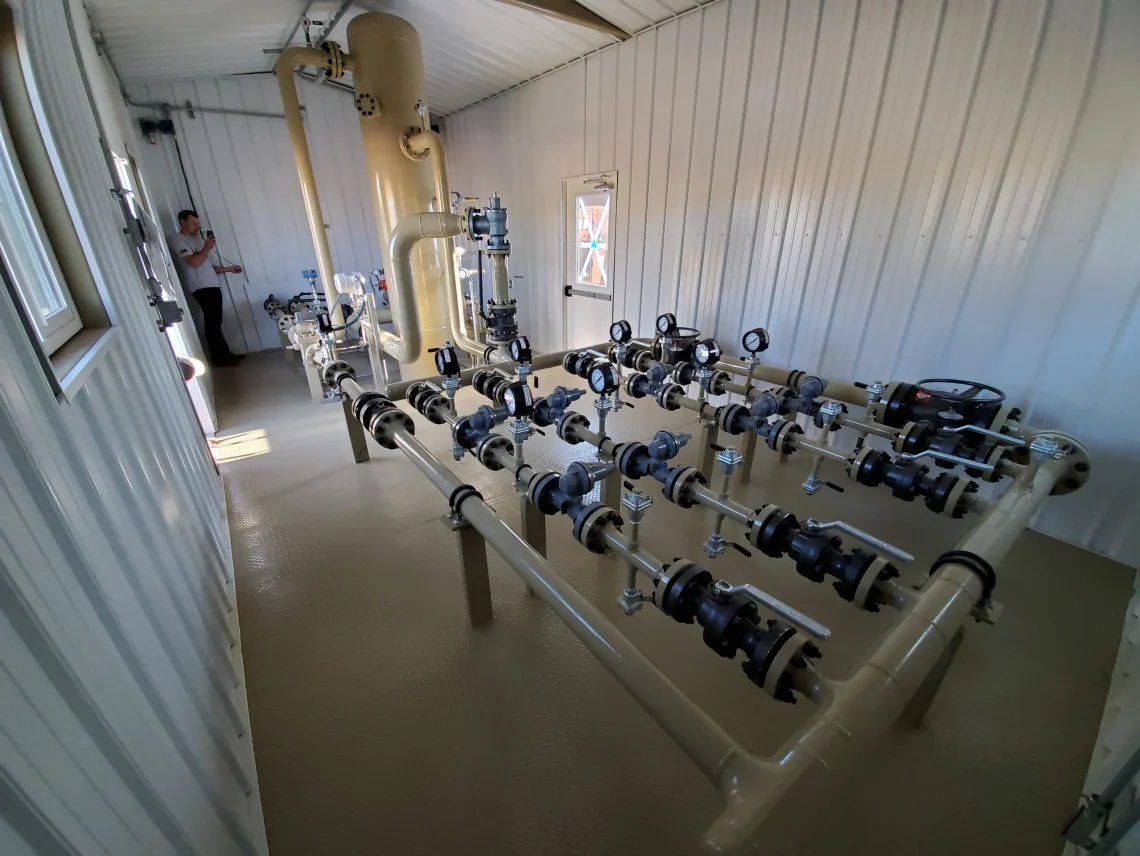
Table of Contents
ToggleSkids, those unassuming yet invaluable tools in material handling and logistics, play a crucial role in catering to diverse industry needs. While the basic concept of a skid involves a flat, horizontal platform supported by runners, the specific designs and features vary significantly. In this article, we’ll explore the different types of skids and highlight their most common variations.
Standard skids are the most common and straightforward type. They feature a simple design with parallel runners along their length. These skids serve industries that require versatile and cost-effective material handling solutions. Moreover, their minimalistic design ensures easy maintenance and adaptability across industries.
Double-faced skids use runners on both the top and bottom surfaces, allowing access from two directions. This dual-sided structure enhances stability and provides a higher load-bearing capacity. These skids transport heavier goods and materials efficiently. Industrial settings, especially those handling heavy machinery or bulk materials, rely on double-faced skids for their durability and effective load distribution.
Reversible skids extend their lifespan by allowing users to flip them and use either side. When one surface shows wear and tear, flipping the skid reveals a fresh surface. This feature reduces replacement costs and minimizes waste. Industries that frequently use skids for material handling find reversible designs highly efficient for cost savings.
Four-way entry skids maximize accessibility by including notches on all four sides. This design allows forklifts or pallet jacks to lift them from any direction. Warehouses and loading docks benefit from this design, as it reduces the need to reposition skids, streamlining operations and cutting down loading and unloading times.
Non-reversible skids maintain a fixed orientation, ensuring they are always used the same way. This simplifies handling and ensures consistent loading and unloading processes. Industries often choose non-reversible skids when orientation matters or when only one side of the skid is exposed to wear.
Block pallet skids use solid blocks instead of runners, providing superior stability and strength. These skids handle extremely heavy or irregularly shaped loads efficiently. Industries like construction and manufacturing rely on block pallet skids to support large machinery, equipment, or dense materials requiring a sturdy base.
Nestable skids focus on space efficiency. Their design allows users to stack and nest them when not in use, significantly reducing required storage space. Businesses with limited warehouse capacity or those needing temporary storage solutions prefer nestable skids for their practicality and cost-saving potential.
Custom-made skids address industries requiring unique specifications. Designers tailor these skids to meet specific load, size, and material requirements, enhancing efficiency and safety. By creating skids based on precise needs, businesses optimize material handling processes.
Presswood skids, made from compressed wood fibers, combine environmental friendliness with functionality. Industries focusing on sustainability choose these lightweight and recyclable skids. Additionally, their compliance with international shipping regulations makes them ideal for export and logistics applications.
Aluminum skids resist corrosion effectively, making them durable in harsh environments or chemical exposure. These lightweight yet strong skids support heavy-duty applications in aerospace, automotive, and manufacturing sectors. Their robust properties make them a preferred choice for demanding industries.
Plastic skids offer a lightweight, durable, and weather-resistant solution. Their resistance to moisture, chemicals, and pests ensures longevity, while easy sanitization makes them ideal for industries like food processing and pharmaceuticals. Plastic skids combine practicality with hygiene for sensitive applications.
Drum skids secure cylindrical containers like drums and barrels during transit or storage. Industries such as chemicals, oil and gas, and pharmaceuticals rely on these skids to ensure the safe handling of hazardous materials. Their specialized design minimizes movement, preventing damage and ensuring safety.
Roll pallets, also known as roll containers, feature wheels or casters for easy mobility. Retailers, logistics providers, and distribution centers use these skids to efficiently move goods within warehouses and stores. Their mobility and adaptability make them indispensable in fast-paced environments.
The versatility and adaptability of skids stand out through their diverse types. Whether businesses need a basic skid for general use or a specialized skid to meet unique demands, there’s a skid designed to fit the need. By understanding the options available, industries can select the right skid to enhance efficiency and streamline logistics.
In conclusion, the world of skids offers tailored solutions for different industries and applications. The choice of skid type depends on load capacity, environmental conditions, and the nature of the goods being handled. Understanding the variety of skids allows businesses to make informed decisions that reduce costs and improve overall supply chain efficiency.
In pressure vessel applications, skids refer to the structural frames that support the vessels and their associated equipment. The types of skids vary based on their design and application. Common types include:
The choice of skid type directly impacts the efficiency of a pressure vessel system in several ways:
Yes, the construction of skids for pressure vessels typically involves robust materials that can withstand heavy loads and harsh conditions. Common materials include:
Absolutely. Skids can be highly customized to meet the specific needs of a pressure vessel application. This customization can include:
Safety is paramount in designing and using skids for pressure vessels. Key considerations include:
In the realm of industrial solutions, Red River emerges as a pioneer, offering a diverse range of custom-engineered products and facilities. Among our specialties is the design and production of Custom/OEM Pressure Vessels, meticulously crafted to meet individual client requirements, ensuring performance under various pressure conditions. Our expertise extends to the domain of prefabrication, where Red River leads with distinction.
The company excels in creating prefabricated facilities, modules, and packages, reinforcing its stance as a forerunner in innovation and quality. This proficiency is further mirrored in their Modular Skids offering, where they provide an array of Modular Fabricated Skid Packages and Packaged equipment. Each piece is tailored to client specifications, underlining their commitment to delivering precision and excellence in every project they undertake.